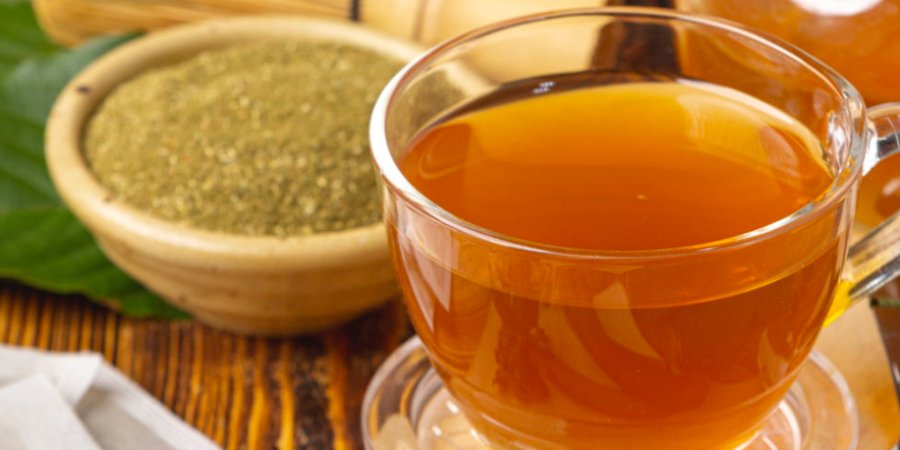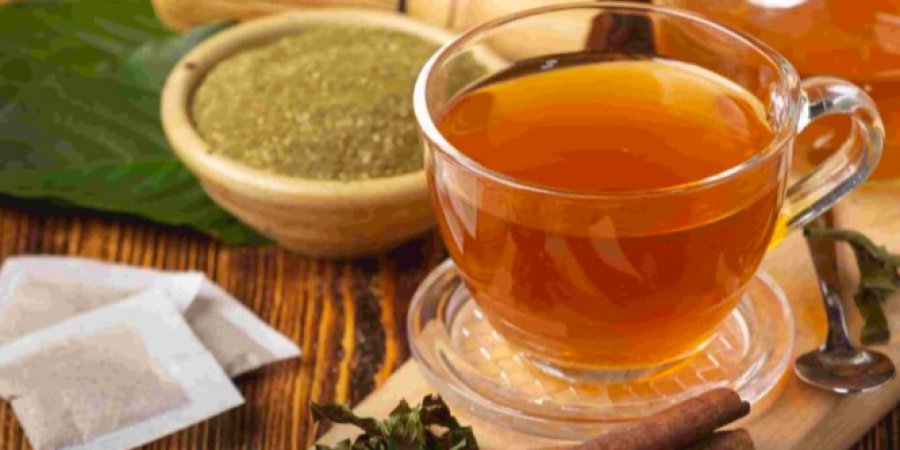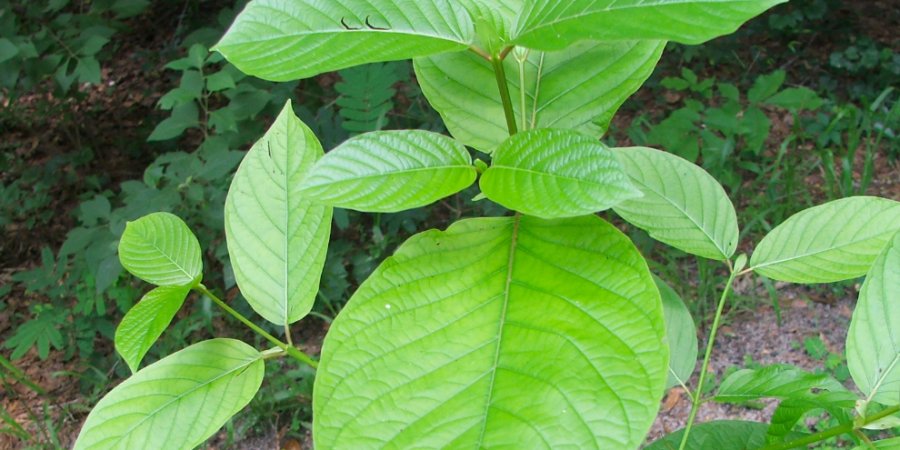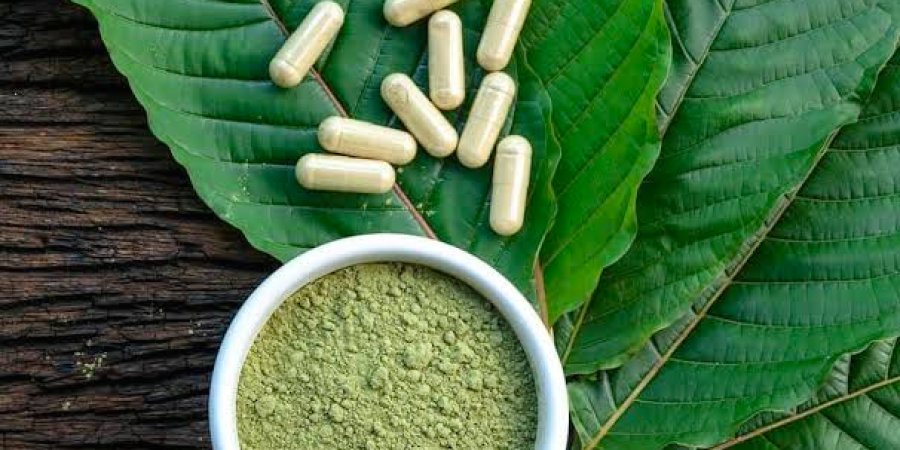Kratom Tea: Benefits and Risks

Kratom, scientifically known as Mitragyna speciosa, is an evergreen tree native to Southeast Asia, particularly found in countries like Indonesia, Malaysia, and Thailand. It belongs to the coffee family and has been traditionally used in its native regions for its stimulant and pain-relieving properties. With the rise of natural remedies and alternative medicines in the West, Kratom has gained significant attention, leading to a surge in its consumption. But what are the actual benefits and risks associated with Kratom tea? Let's dive deep into the topic.
What is Kratom?
Kratom, known by various names such as ketum, biak-biak, and Maeng Da, has been used in Southeast Asia for at least 150 years. Traditionally, workers chewed on the leaves for its stimulant effects, which provided them with the energy to get through long hours of manual labor. Additionally, brewing the leaves into a tea offered relaxation and pain relief. Even today, many in Southeast Asia consume Kratom for these reasons.
Potential Benefits of Kratom Tea

Kratom has been traditionally consumed for its various perceived benefits. While the scientific community has yet to fully endorse these benefits due to limited research, many individuals swear by its effects. Here's a more detailed look into the potential benefits of Kratom tea:
Energy Boost
One of the primary reasons people turn to Kratom is for its energy-boosting properties. Just as coffee can provide a morning jolt, Kratom is believed to increase energy levels, helping users feel more alert and focused.
Pain Relief
Kratom has been traditionally used for pain relief. The compounds in the plant are believed to have analgesic properties, making it a natural alternative for those looking to manage chronic pain without resorting to pharmaceuticals.
Mental Health Improvement
Some individuals consume Kratom to help with mental health conditions. While the exact mechanisms remain unclear, anecdotal reports suggest that Kratom might help alleviate symptoms of anxiety, depression, and other mood disorders.
Euphoria and Pleasure
At certain doses, Kratom can produce feelings of euphoria. This mood-lifting effect is one of the reasons it has gained popularity in recreational circles. Users report a sense of well-being and pleasure after consuming the plant.
Aid for Opioid Withdrawal
One of the most discussed potential benefits of Kratom is its use as an aid for opioid withdrawal. Given the opioid crisis in many parts of the world, natural alternatives that can help users wean off these drugs are in high demand. Kratom's compounds interact with opioid receptors in the brain, which is believed to help reduce cravings and withdrawal symptoms.
Enhanced Libido
In some cultures, Kratom has been used as an aphrodisiac. While scientific evidence is scant, some believe that the plant can enhance libido and improve sexual performance.
Associated Risks of Kratom Tea

While Kratom tea might offer some potential benefits, it's essential to be aware of the associated risks. As with any substance, what works for one person might not work for another, and there can be adverse effects. Here's a comprehensive look at the potential risks associated with Kratom tea:
Addiction and Dependency
According to experts who write for us on traditional medicine, one of the most significant concerns with Kratom is its potential for addiction and dependency. The U.S. Food and Drug Administration (FDA) and the U.S. Drug Enforcement Administration (DEA) have both issued warnings about Kratom's addictive nature. The plant's compounds act on opioid brain receptors, which can lead to withdrawal symptoms similar to those experienced with opioid drugs. Regular and consistent Kratom usage can lead to dependence, with withdrawal symptoms that include fever, muscle spasms, appetite loss, and mood swings, among others.
Health Risks
Kratom's potential health risks are a matter of concern. While some people might consume it without any adverse effects, others might experience:
-
Sweating: Some users report excessive sweating after consuming Kratom.
-
Dry Mouth: Kratom can cause a dry mouth, leading to increased thirst.
-
Rapid Heartbeat: Some individuals might experience tachycardia or a rapid heartbeat after Kratom consumption.
-
Itchiness: Kratom can cause itchiness in some users.
-
Digestive Issues: Increased urination, constipation, nausea, vomiting, and loss of appetite are potential digestive side effects of Kratom.
-
Sleep Disturbances: Kratom can lead to insomnia in some while causing drowsiness in others.
-
Mental Effects: Confusion, delusions, seizures, and hallucinations are severe mental side effects associated with Kratom.
-
Severe Health Complications: In extreme cases, Kratom can cause acute liver failure, hepatitis, acute kidney injury, damage to the heart muscle, acute lung injury, cognitive impairment, and even coma.
Fatalities
While rare, there have been reported fatalities associated with Kratom use. It's essential to note that most Kratom-related deaths occurred when the user consumed Kratom in conjunction with other drugs.
Legal Implications
Kratom's legal status varies worldwide. While it remains legal in many parts of the world, some countries and states have banned or restricted its sale and consumption due to concerns about its safety and potential for abuse.
Misinformation and Lack of Regulation
The growing popularity of Kratom, especially in the West, has led to a surge in misinformation. Without proper regulation and research, it's challenging to determine the purity and quality of Kratom products available in the market. This lack of oversight can lead to the consumption of adulterated or contaminated products, increasing the risk of adverse effects.
Interactions with Other Substances
Combining Kratom with other substances, such as caffeine, alcohol, cannabis products such as CBD, can be dangerous. These combinations can amplify the effects of Kratom or lead to unpredictable reactions, increasing the risk of severe health complications or fatalities.
Different Types of Kratom Teas

Kratom, a tropical evergreen tree native to Southeast Asia, has been traditionally consumed in various forms, with tea being one of the most popular methods. The unique strains of Kratom are primarily differentiated by their vein color, which can influence the effects and benefits they offer. Here's a closer look at the different types of Kratom teas:
Kratom Strains
Red Vein Kratom
Red vein Kratom is derived from leaves that have red-colored veins and stems. This strain is known for its calming and soothing effects. Many users prefer red vein Kratom for relaxation and pain relief. It can help ease users into a more meditative state of mind.
Green Vein Kratom
Green vein Kratom is known for its balanced effects. It can inspire productivity and focus, making it a popular choice for those looking to enhance their work or study sessions. It's a middle ground between the stimulating effects of white vein and the calming effects of red vein Kratom.
White Vein Kratom
White vein Kratom is harvested from leaves with white-colored veins and stems. It's known for its stimulating effects, enhancing optimism, motivation, and energy levels. Many users turn to white vein Kratom as a morning pick-me-up or to boost their mood.
Naming Conventions
The naming of Kratom strains can sometimes be confusing. While the primary differentiation is based on vein color (red, green, white), other factors also play a role:
-
Geographical Origin: Some strains are named based on where the Kratom tree grows. For instance, strains like "Bali" or "Borneo" indicate the region of origin.
-
Leaf Type: Some strains are named after the specific type of Kratom leaf harvested.
-
Drying and Fermentation Processes: The way Kratom leaves are dried and fermented can influence their effects. Some strains are named based on these processes.
It's worth noting that most of the Kratom available in the market is derived from red vein Kratom leaves. These leaves undergo specific processing methods and are exposed to certain amounts of UV light to produce different strains.
Ingestion Methods
Traditionally, in regions like Thailand, Borneo, and Malaysia, people chewed Kratom leaves or brewed them into tea. However, with the global popularity of Kratom, various ingestion methods have emerged:
-
Toss-and-Wash: This method involves taking a spoonful of Kratom powder and quickly washing it down with water. It's a quick and effective way to consume Kratom.
-
Capsules: Some users prefer to encapsulate Kratom powder, making it easier to monitor dosage and consume discreetly.
-
Mixing with Food: Kratom powder can be mixed with various foods, from smoothies to oatmeal, to mask its bitter taste.
-
Kratom Tea: One of the oldest and most trusted ways to consume Kratom is by brewing it into tea. Whether using leaves or powder, Kratom tea offers a pleasant way to enjoy the benefits of Kratom. The tea can be sweetened, chilled, or mixed with other herbal teas for enhanced flavor.
In conclusion, the world of Kratom is vast and varied. Different strains offer unique benefits, and the method of consumption can influence the experience. As always, it's essential to source Kratom from reputable vendors to ensure quality and safety.
Where to Buy Kratom Teas

When it comes to purchasing Kratom teas, it's essential to prioritize quality, purity, and safety. The market is flooded with various Kratom products, and not all vendors adhere to the highest standards. Here are some guidelines and recommendations for sourcing Kratom teas:
Online Vendors
The internet is the most common platform for buying Kratom products, including teas. Many reputable online vendors offer a wide range of Kratom strains and products:
-
Kats Botanicals: Known for their high-quality Kratom products, Kats Botanicals has a strong relationship with Kratom farmers and processors in Southeast Asia. They ensure that their products are tested by third-party laboratories for purity and potency.
-
Kraken Kratom: Another reputable online vendor, Kraken Kratom offers a variety of Kratom products, including powders, extracts, and capsules. They emphasize quality control and lab testing.
-
Coastline Kratom: This vendor is known for its premium Kratom products and offers both powders and live plants. They provide detailed information about each strain, helping customers make informed choices.
Local Specialty Shops
Many cities have specialty shops or botanical stores that carry Kratom products. These stores can be a good option for those who prefer to see and touch products before purchasing. However, it's essential to research the store's reputation and ask about their sourcing and testing practices.
Kratom Bars
In some regions, especially in the U.S., Kratom bars have become popular. These establishments serve Kratom teas and other beverages. While they offer a unique experience, it's crucial to inquire about the source and quality of their Kratom.
Things to Consider When Buying Kratom
-
Third-Party Lab Testing: Always opt for vendors that provide third-party lab testing results. This ensures that the product is free from contaminants like heavy metals, pesticides, and harmful bacteria.
-
Transparency: Reputable vendors are transparent about their sourcing methods, relationships with farmers, and product processing.
-
Customer Reviews: Look for vendors with positive customer reviews and testimonials. Feedback from other customers can provide insights into product quality and vendor reliability.
-
Avoid Suspiciously Low Prices: While everyone loves a good deal, suspiciously low prices can be a red flag. High-quality Kratom is not cheap, and vendors offering products at significantly lower prices might be compromising on quality.
-
Educate Yourself: Before making a purchase, educate yourself about different Kratom strains, their effects, and recommended dosages. This will help you choose the right product for your needs.
Conclusion
While Kratom has been a part of Southeast Asian culture for a long time, its health benefits remain largely unknown. On the other hand, there's substantial evidence pointing to the health risks associated with its consumption, especially in higher doses. As with any alternative medicine or natural remedy, it's vital to approach Kratom with caution and prioritize science over hype.
More to Read:
Previous Posts:



